Alin Ușeriu, initiator of Via Transilvanica - Romania's "Road that Unites": Without people, there is no heritage
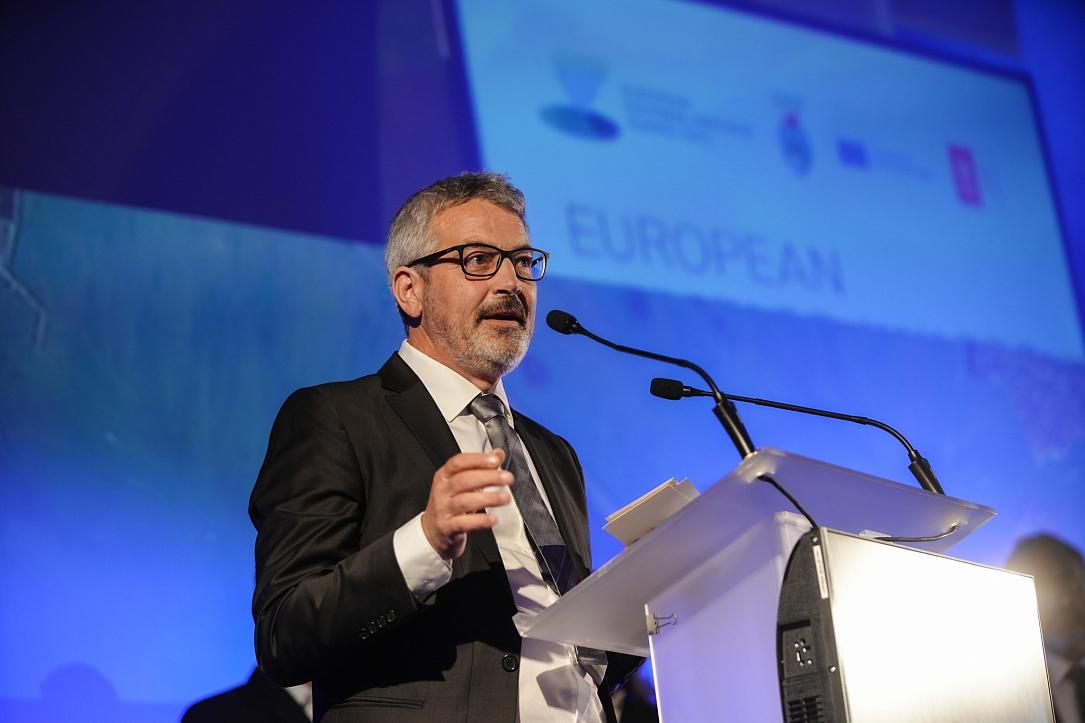


Via Transilvanica was started in 2018, the year Romania celebrated the 100th anniversary of the Great Union of all its provinces into one country. Hence, its mission to be “the road that unites.” In its 1,400 kilometers, it unites ten counties and around 400 communities, with their ethnic, cultural, historical and geographical diversity, while showcasing 12 UNESCO World Heritage Sites. The trail crosses communities that were on the verge of extinction, and are now given the possibility of economic development through tourism.
It also united local communities and more than 10,000 volunteers in four years of work to set up the trail, which is marked by andesite landmarks, individually carved by Romanian or foreign sculptors in the Tășuleasa Social sculpture camps. Marking every kilometer on the trail, they not only guide the hiker – alongside signposts and frequent paint markings – but have also turned Via Transilvanica into a large outdoor sculpture exhibition.
More recently, the trail united supporters who voted to make it the winner of the 2023 Europa Nostra Public Choice Award with a record number of votes. Organizations representing Romanians abroad, such as the Romanian United Fund (RUF) in Chicago, carried out campaigns to mobilize voters.

Earlier this year, Via Transilvanica was also named as one of the winners in Citizens’ Engagement & Awareness-raising category of the Europa Nostra Awards, having impressed the jury with its role “as a vital connection between the community and diverse facets of heritage.” “The project has fostered a strong sense of place, deepening people’s connection to the trail and its surroundings,” the Awards’ Jury said at the time, noting how “working alongside public stakeholders, NGOs and other organizations, the project has reached out to over 7 million people.”
What allows the project to resonate so well with so many people is the fact that it is built on positive values that emphasize community, care for nature, and a celebration of the country’s rural heritage. It stands in contrast with initiatives “based on fear or catastrophe, pandemic, war, or corruption," Alin Ușeriu, the initiator of the project, explained at an event announcing the availability of Via Transilvanica on Google Street View.
The idea of the project was born during the period of more than ten years Ușeriu spent living in Germany. Confronted with many negative reports about the country, when asked to offer a counter perspective, he could only mention “personalities or characters,” such as gymnast Nadia Comăneci or canoeist Ivan Patzaichin. "I thought that maybe it is an issue not of all journalists hating Romania but of us needing to do something about it,” he recalls. While recognizing the numerous issues that need to be addressed - Tășuleasa Social runs projects in areas ranging from the environment and education to culture and sports – the idea of a different path emerged. "What if we, with all the problems we have, had a project that is like a path where you don't get lost? This was our thought in 2018. We called it ‘the road that unites,’ and what happened afterwards was just incredible."
The project was started with funds earned from the sales of Tiberiu Ușeriu’s autobiography 27 Steps. Endurance athlete Tiberiu Ușeriu, the brother of Alin, became a local hero in 2016, when he finished first the 6633 Ultra, a 560-kilometer race across the Arctic Circle known as one of the toughest in the world.
Meanwhile, volunteers, businesses, communities and Romanians living abroad rallied behind the project to see it completed. Among those who supported it was the Romanian United Fund (RUF), which raised more than USD 150,000 for the project. Via Transilvanica and RUF have now developed a kit of materials meant to take the story of Via Transilvanica further across the world and showcase the country’s beauties.
As hikers from all over the world embark on a journey on the trail, there is more to be done to realize the potential of the project, its initiator explains. Part of the effort means bringing together all stakeholders around the trail - from hikers and hospitality providers to authorities and local communities - to make it known worldwide and build development opportunities for the localities it covers.
More on what lies ahead for Via Transilvanica and why it is important to walk the road that unites below.
How was the first year with the completed and inaugurated Via Transilvanica? What did you learn? What surprised you?
Alin Ușeriu: It was a great year for Via Transilvanica.
It always seemed to me that we are somehow world champions when it comes to planning. We lose a lot in implementation and we end up somehow at the bottom of the chart. [Unlike] when we do what we say and we say what we do. And it seems we find it very difficult to care for something. Almost all the projects in Romania that are most dear to me are those that care for something that exists. Via Transilvanica crosses hundreds of villages, historical and cultural places, and an important diversity, but, at the same time, it also develops and cares for those places it crosses. We needed to see if we could also care for it. Because we built it but the resources [e.n. needed] to care for it tripled.
So, we were nervous but, if I am here a little less than a year since Via Transilvanica was launched, it means we succeeded in Romania to gather resources based on values and to care for something. This is very important. It is a project that, I believe, shows how the Romanian society grows when it joins projects with values it believes in - it can be natural heritage, cultural heritage, historical heritage, which is just as extensive as the trail’s diversity.
Via Transilvanica crosses many ethnic regions in its 1,400 km, but all this rural universe, which is an exceptional one, needed this project. And we needed to see if we manage to keep it alive. Not only did we keep it, we intervened, we repaired, we moved a part of the road that, when we built it, we didn’t know how well it will work. We also paved several segments; we redirected the trail to cover sites that we realized were more beautiful, and we cared for it.

We did a new website, we won an important European prize - I think it is one of the most prestigious prizes also due to the fact that many worldwide voted – the people from the Romanian United Fund also helped us. It is exceptional in this respect. Our diaspora is very strong, it is big, and it should have - as I wished to have when I lived in Germany - something like Via Transilvanica. We kept talking about [e.n. sprint canoeist] Ivan Patzachin, [e.n. gymnast] Nadia Comăneci, [e.n. football player] Gheorghe Hagi. What if there was somewhere you could walk, not only characters and people? The character, I’m thinking here of Dracula, was again something I didn’t identify with. They [e.n. foreigners] knew more about Dracula than I did.
So we had many, many positive surprises. There was a lot of work to do, it is a national infrastructure that does not belong to the Ușeriu brothers, and somehow Romania needs to realize the potential of this project and help us. But this is already happening.
During the period you were working to set up the trail, there were various instances of landmarks and signposts being vandalized. How do you take care of the road now? What kind of logistic and financial effort does the maintenance of Via Transilvanica entail and how does this happen?
Alin Ușeriu: The financial effort is of EUR 1 million per year because we are talking about a national infrastructure. This was my biggest concern, how will we gather all the money because we have nothing left to sell besides this value of the project. So this was a challenge. But now the partnerships are signed for an extended period. We hope that the project’s notoriety and value will bring in more people.
There were indeed instances of vandalism, not concerning the landmarks – those were mainly small because the landmarks are loved by the community but, to give you an example, 700 signposts out of the 1,400 – there is one at almost every kilometer. They were made to last at least 30 years in nature. They did not, not even a year because, when something new enters a community, there is this shock that I have come to understand. Our villages, as I have said before, are not necessarily abandoned; they are owned by a new type of exploiter who only wants to gather the subsidies, the resources, the forests, the meadows, the abandoned houses, the lands.
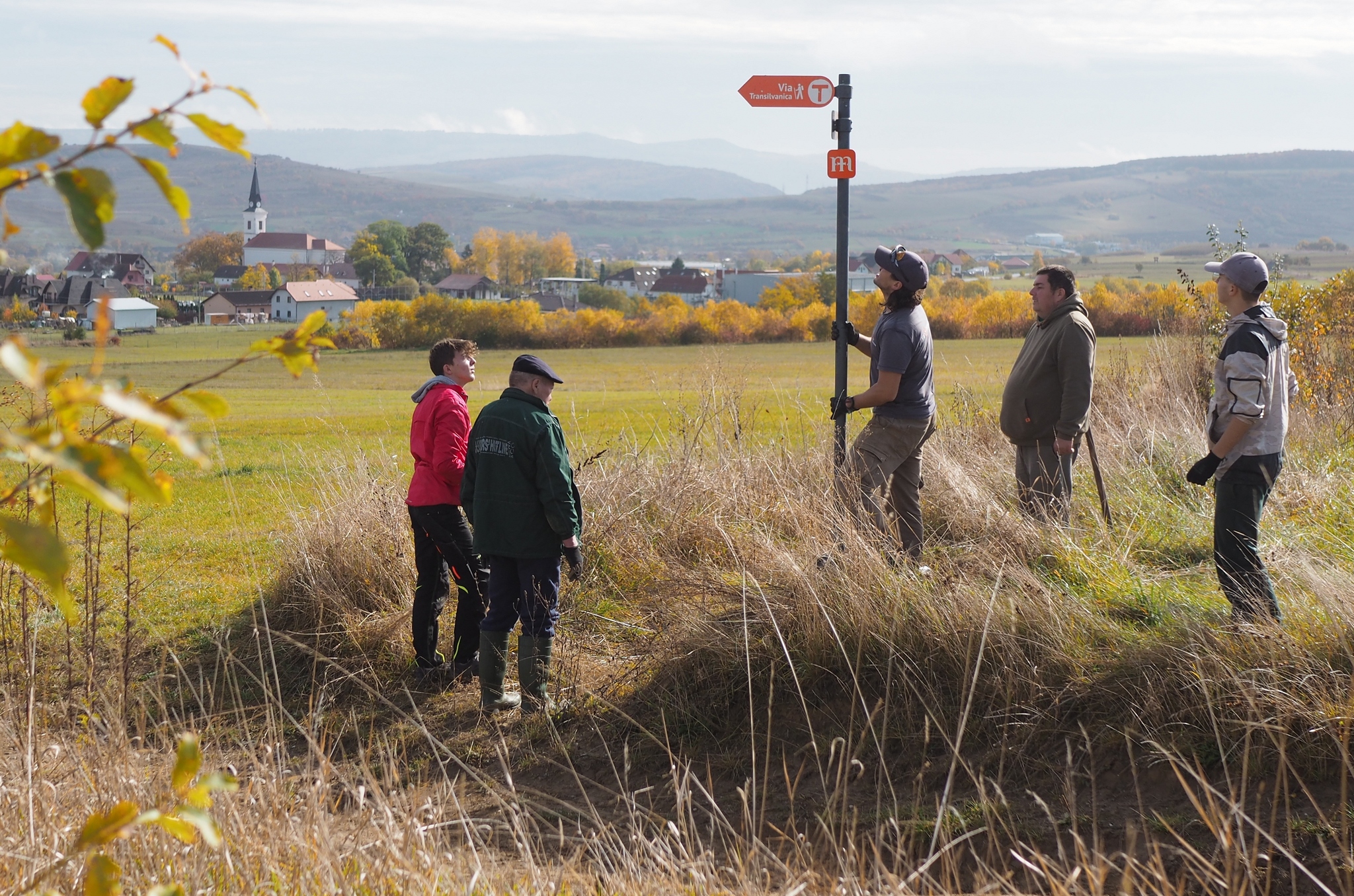
We wanted to go through the issues that Romania has, not only the spectacular places. We wanted a development engine for the localities along the trail. And this is happening; and the greater the development, the more present people are. This is why I tell people to walk the Via Transilvanica. Even if they don’t make a donation, they should walk the trail to see, first of all, what a beautiful country ours is. Also because their presence means that somewhere someone is baking a bread for them, makes a bed for them, and is happy they are no longer alone in their village because there is someone now visiting.
Via Transilvanica has many aspects, but it also has two or three rangers who did not understand that this is not only their resource and, at some point, they need to give it to those who love nature not only to those who cut it.
I believe that, bit by bit, no one will be able to stop Via Transilvanica, not even us, the founders. And this is for the best. It is what I have dreamt of before having it. We can no longer stop it and this is precisely why we cannot be its chiefs. It is a gift offered to Romania. Now, we can be good workers for this ambassador [en. that is Via Transilvanica]. We need to take care of it, of its safety, quality, and maintenance. This is what I can coordinate at this point, and of course, for as long as we can. The Ușeriu brothers can do this if they receive help and Romania adopts this project in its entirety.
The Europa Nostra awards you received this year are heritage-related ones. Are there other ways in which you can protect the trail?
Alin Ușeriu: The Europa Nostra prize [e.n. Public Choice] was a very good one because it opened some doors. It is the first time that we, as a non-profit, have a real instrument in negotiating with the authorities.
We have done all sorts of things. We were probably the first organization in the country talking in 2000 about the power of volunteering. In 2004, we did the first afforestation; we reached hundreds of children, and we also did a pedagogical forest. We had numerous other projects, but Via Transilvanica brought us in this position of having a real negotiating instrument because the project is a very good one.
We will meet the prime minister and ask him to find a way to make it a project of national interest, to have legislation that allows hikers to feel safe and sheltered. This is a process we cannot do ourselves. We can request it; we have worked with many lawyers who have helped us with a draft law for this but, from now on, it is the job of the authorities to recognize this project and I think it will happen.
Beyond the work to recognize the project as one of national interest, what is next for Via Transilvanica? How would you like to see it developing?
Alin Ușeriu: In two-three years, with all the developments on the trail, there are around 15 sites where we will not have enough accommodation places. So the next layer for us is to not stop the trail anywhere because of such a simple and, in the end, trivial, issue like the accommodation places. This is what we are working on – to find a form of investment, a form of participation, including of investors in partnership with Via Tansilvanica, to find a solution for this. I am thinking a lot about the rate at which we can actually show this hospitality, that many people recognize, everywhere [e.n. along the trail]. It is about being able to welcome enough tourists. If we can offer them, there will be enough people to occupy these accommodation places.
You received the Public Choice Award at this year’s Europa Nostra Awards with a record number of votes, many of them from the diaspora. Did you expect it? Was there something that surprised you?
Alin Ușeriu: We were happy. It was exactly what I am talking about – the fulfilment of destiny. From the very beginning, Via Transilvanica was conceived and born without using fear, corruption, villainy, war or pandemic – which I would like to see all solved. We also need a mature society, one that mobilizes to do things out of joy, out of the values we have, that Romania has.
It was not a simple voting process, people had to choose from several projects, confirm through an email. Few made it to the final stage so this record number of votes impressed everyone there because the distance between us and the previous record holders was huge.
I will keep saying this – Via Transilvanica is a true ambassador for Romania. It is an ambassador we can use because it does not lie. It unveils this country in a way we did not know before. This project has the strength and purpose we established for it from the very beginning, in 2018. It is the road that unites. This is where we need to pay attention – at how we can all participate and care for this project so that it lives on.
My mother has a saying: “God forbid grass grows on your doorstep.” In Romania, unfortunately, grass is growing on the doorstep. So many people left. Via Transilvanica can show how beautiful Romania is and let people walk on the grass on our doorstep; because many places in the country are, unfortunately, abandoned, and, without people, there is no heritage.
---
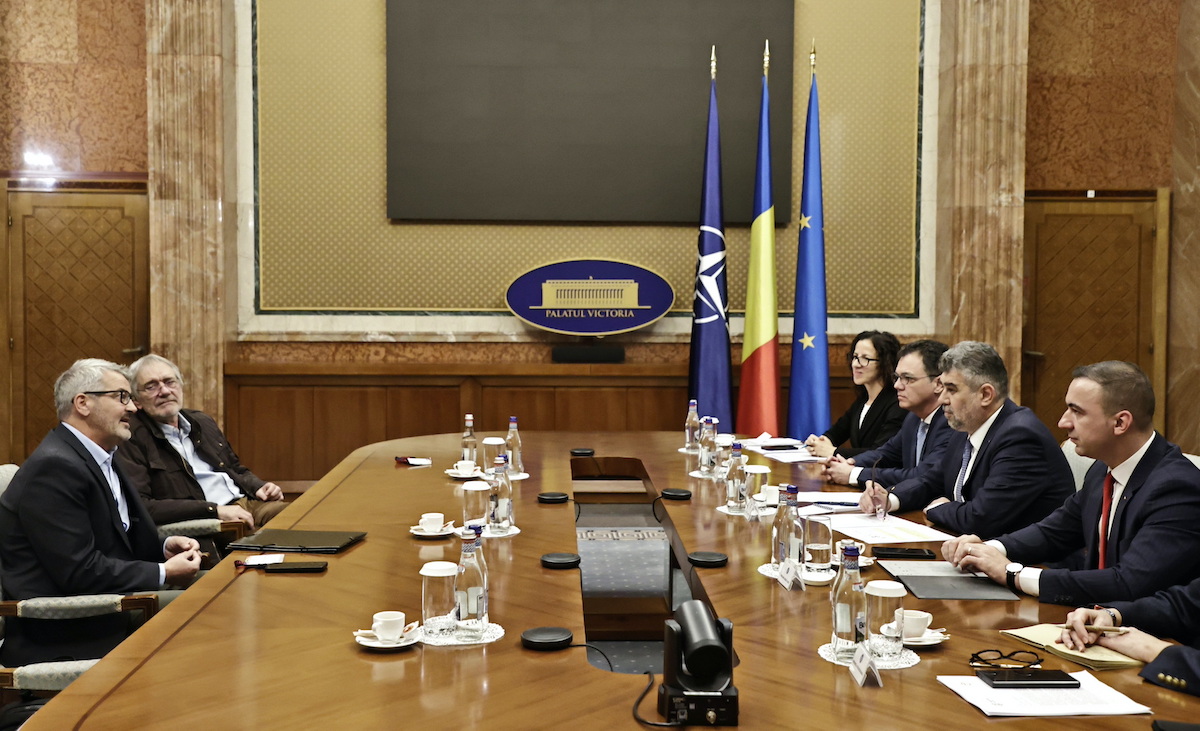
On October 26, following a meeting between Tăsuleasa Social and PM Marcel Ciolacu and several other Government members, the prime minister expressed his support for the legal framework that would ensure that Via Transilvanica is recognized as a national-interest long-distance trail. More on what this status entails for the project in the second part of this Q&A.
What does the status of a project of national interest entail for Tășuleasa Social, for the localities the trail crosses, and for the hikers?
Alin Ușeriu: It seems to me that this the first time that our organization has a real instrument to negotiate with the authorities, and this is one of the biggest victories, one we have been awaiting for 23 years.
To be a dialogue partner for the authorities, we tackled two aspects. First of all, you need to have a good project, because, otherwise, you would have to force a dialogue with the authorities, and, secondly, a relevant one. No politician will waste their time if the project is not of major relevance. And this has been, I believe, the most important meeting of our organization with the prime minister in 23 years. Because we have these two ingredients; we have a very good project.
This is not a law dedicated to Via Transilvanica - that would unconstitutional. We drafted a legislative proposal that would regulate active tourism in the form that Via Transilvanica proposes. This is urgently needed because Romania has a lot of potential to regulate this activity.
More specifically, what is needed is for the hiker or anyone undertaking this long-distance journey to feel safe. What is also needed is for communities to ensure the hikers’ protection in the face of various forms of aggression, of vandalism. On public roads, especially the asphalted ones, we see this conflict between cars and pedestrians, and a safety lane is needed. Forestry workers need to be careful, that, according to the law, this is a tourist trail. Probably the issue we encounter most often is that of dangerous animals and their owners. They can have a bull, which can fatally injure if they impale you. The owner will receive at best a fine. The best-known problem is that of the dogs. Again, we need to take huge steps to update the legislation.
Via Transilvanica, working with several volunteer lawyers from Reff & Asociații and Țucă Zbârcea & Asociații, took this draft law to the Ministry of Economy, Entrepreneurship and Tourism. We learnt there that the law will also help adapt the tourism law, which is very old and needs updating, in accordance with Romania’s current situation and the interests of the public.
It is not a simple meeting for us, it is a stepping stone that we can build on and, if it is accepted, it will embody the meaning we had in mind 23 years ago, when we founded Tășuleasa Social, namely a project built by a non-profit which manages to change and support a country’s legislation through an example of best practices - to have legislation support activities and not be against them, to think less about fines and more about how these rules can support our activities.
What comes next for this piece of legislation after this first discussion?
Alin Ușeriu: The prime minister promised us it will reach all the ministries that are in charge of what we proposed. The Environment Ministry will be involved, the Interior Affairs, the Agriculture ones, plus the Economy, Entrepreneurship and Tourism Ministry. We hope it is a proposal that everyone backs and that the Government sends it to Parliament because we want this law to have a majority, a consensus, and for it to be passed, if possible, within a reasonable timeframe.
There is a promise to somehow make this law a priority, especially that our project already received an important international prize and the international interest in our story is high. It would be good to have Via Transilvanica among the trails regulated by its own rules and with a safety adequate to the interest it generates.
Besides the effort related to this status for Via Transilvanica, what else do you plan for the project until the end of the year and on the short term?
Alin Ușeriu: With Via Transilvanica, we have three buttons we press permanently. We have the maintenance button. Every day, as much as we can and the resources allow, we are present. We either relocate a segment of the trail that, when we first made it, we didn’t know how complex it can become. It can be a segment that now is asphalted, because, initially, we didn’t have the resources to take less-travelled routes. Because it is asphalted, it no longer fits the trail’s values. Asphalt can be hard to walk on. It is also this territory of the fight between car and man, where the car usually wins, and the driver somehow feels they own the asphalt. There are villages that completely surrendered to asphalt; they have no sidewalks, there is no stripe of land for the pedestrians who live there, as if the villages are inhabited by cars only. I think this needs a closer debate.
There is also the quality button, meaning we need to tell people, every time, about the project. We need to tell shepherds that we are not a danger to their flock, to tell forestry workers we do not compete with them and we do not want the forest as planks but as forests, and this is not an easy mission.
At the same time, we need to ensure the trail’s sustainability because otherwise it will not work. It will need to be walked by a large number of hikers, and they find out about it when we talk about it. So our mission is to evangelize, so to speak.
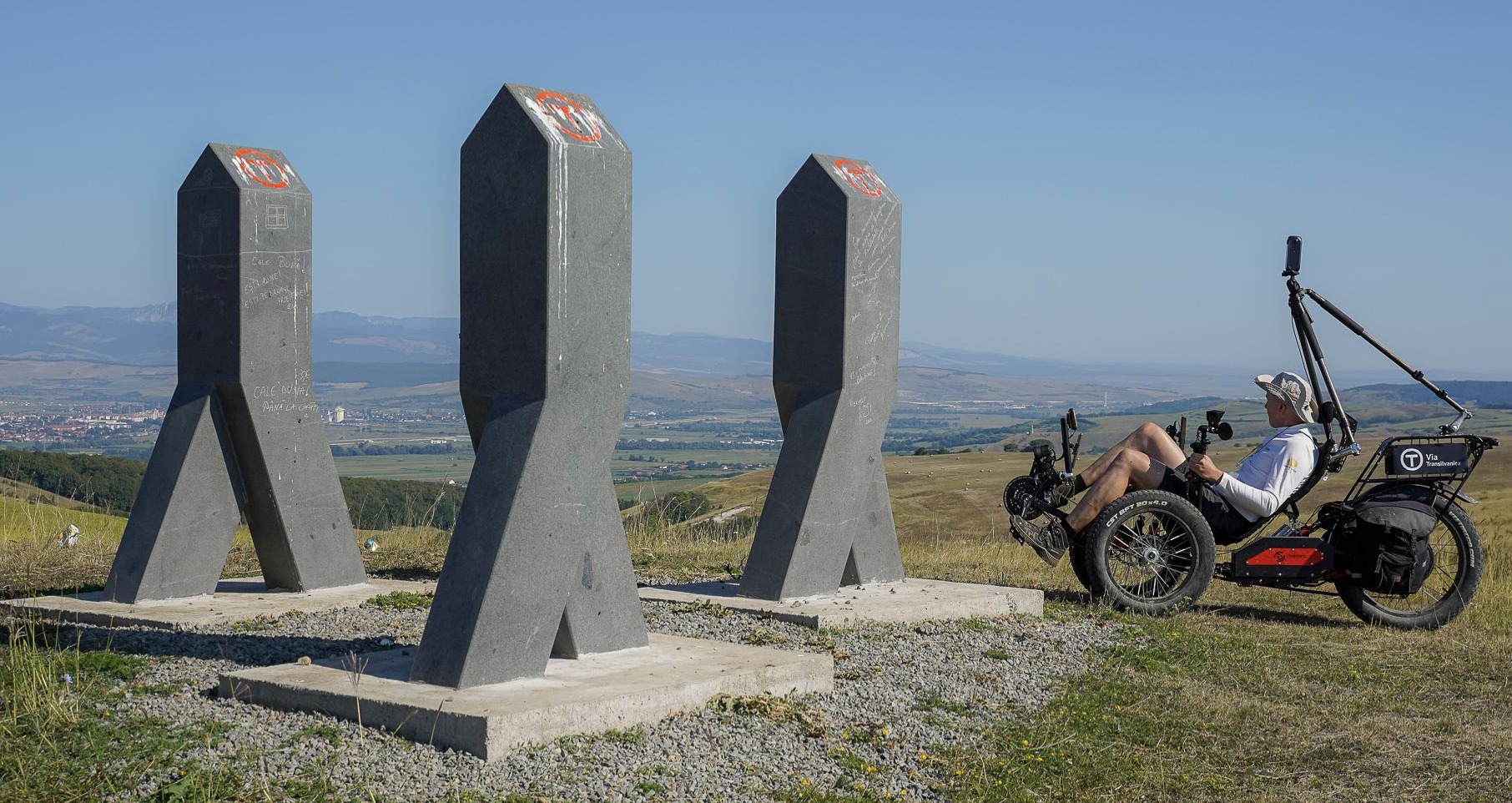
Google recently helped by adding Via Transilvanica to their Street View map. A project I am fond of and where we worked the most this year, at least on the creative side, with Romanian United Fund is to be able to showcase Via Transilvanica anywhere in the world with a single visual identity.
By sending these Via Transilvanica presentation kits we tackle two important aspects. On the one hand, we want to show Via Transilvanica as it deserves to be shown, but we also have a reason to meet other people around the globe.
I think Via Transilvanica needs a community, it needs Romanians to love the trail. They can help it by walking it, by making a donation, or by improving it through entrepreneurship on site. As it happened to me when I was living abroad and I missed the country terribly, it can be a reason for people to meet and talk about the trail, which is a real ambassador of Romania. It shows Romania as it is, not made up and untrue, but with its impressive rural and natural heritage. The rural universe and the natural heritage are things that follow us around the globe and draw us back. Now we have a reason to do this by sending someone to walk the Via Transilvanica to get to know Romania and later, they can become ambassadors of the project.
How did the partnership with Romanian United Fund start and develop in time? What do you plan for the coming period?
Alin Ușeriu: Our partnership has been ongoing since 2019. The first time we met we were experiencing this tremendous enthusiasm about the construction of Via Transilvanica. Romanian United Fund followed closely what we were doing and somehow did more than we expected. We knew about the fundraising events where Romanians living abroad meet and our project did not necessarily match what Romanians were used to supporting at the time. They were rather more open to a social cause. I remember from the time I spent in Germany that, when a social cause was involved, we managed to gather resources much faster than when we talked about the country’s beauty.
The maturity of the diaspora and the fact that, in Chicago, the Romanian United Fund acted as a catalyst for the values they are surrounded by were natural. They had an exceptional gala where a lot more than we had hoped for was raised. We thought some USD 10,000 would be raised but so far they raised more than USD 150,000 since this gala. Naturally, Romanian United Fund represents to a certain extent the diaspora as we see it. They are not an official representative of the diaspora because this will have to be a separate construction and I hope that Romanian United Fund manages to do this as quickly as possible because a more united voice of the diaspora is needed, one that corresponds to more voices and interests.
We remained partners in our path and what followed was a tour in ten cities in the U.S. We screened Terra Banatica, the film we did while building the trail. On this journey, we realized that Via Transilvanica can be the trail that stretches across the globe and we can offer it to everyone, be them in New Zealand or in Canada.
To do this, we thought the place should be familiar somehow and this is how the idea of the kits emerged. This became a reality with the help of the funding from the Department of the Romanians Abroad, and it allows us to do this job. I understand the interest in the kit is high and they will go to as many places around the world as possible.
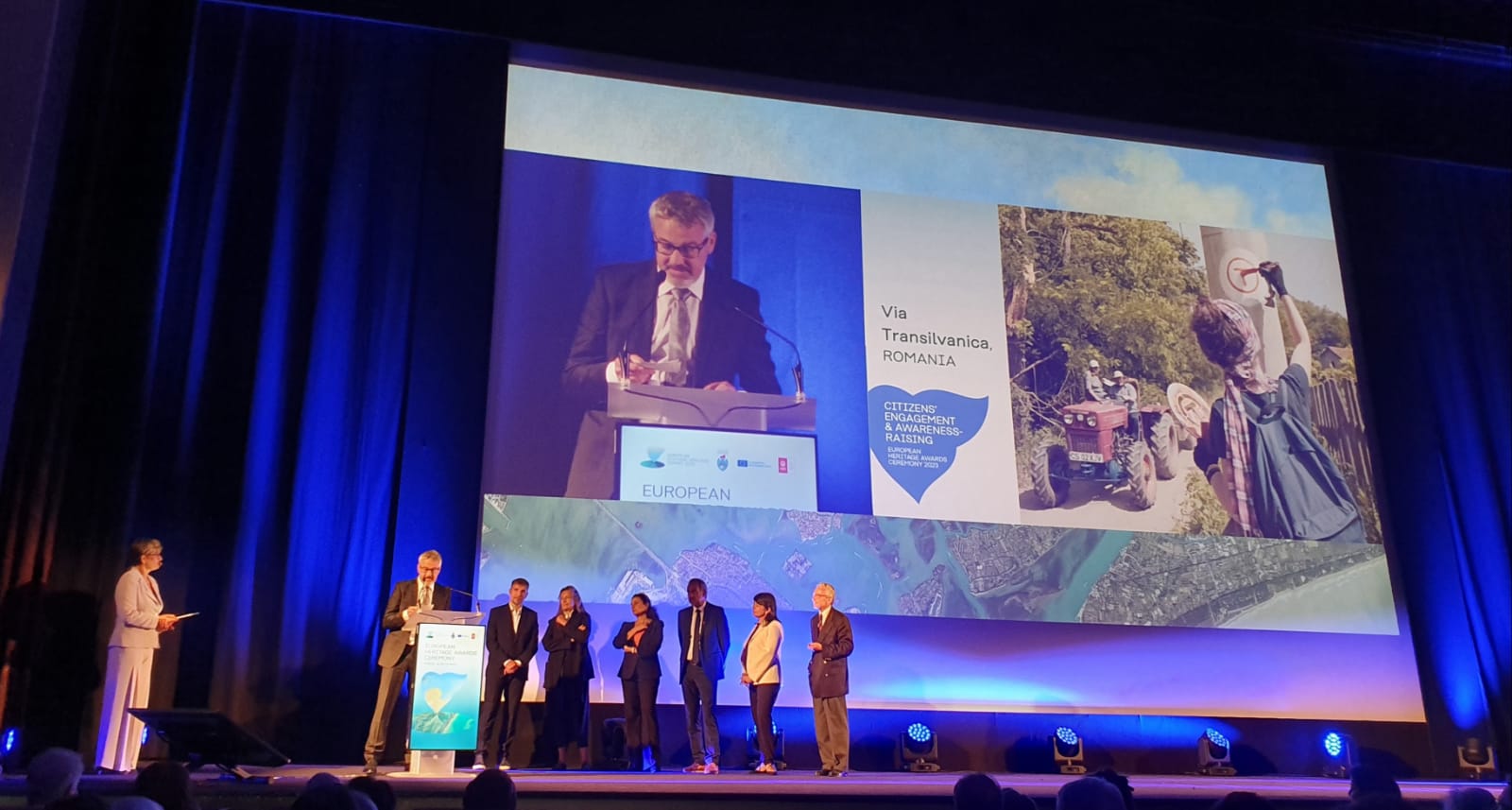
How can people – in the country and abroad – support Via Transilvanica?
Alin Ușeriu: The most important button is the donations one. It will slowly turn into a membership one because we want Via Transilvanica to have a large community.
These days I am very happy that a radio station in Iași, where Via Transilvanica does not reach, decided to purchase, together with their listeners, a landmark for a celebration they have. When we see donations coming in, especially towards the end of the year, when funds are mostly exhausted, we realize how many more things we need to do and issues to cover. We are happy about every RON and euro cent, and any resource is welcome.
Of course, we want to see each other again on Via Transilvanica, in Romania. We are certain there are people who maybe own land close to Via Transilvanica and live somewhere else in the world and they might want to consider some sort of partnership with us. We can develop a hostel, a camping site, a small social enterprise, a social investment that can bring a real improvement. There will be a lot of people to feed on Via Transilvanica and we will need to be hospitable.
These are some of the things we look for in the diaspora, and of course, the other way around, I hope the kit is only the beginning. I hope we can print an album with the landmarks on Via Transilvanica, a cookery book in as many languages as possible with various soups. They could all add to this multifaceted kit that we will keep improving. It will include everything you need to be able to explain quickly what Romania is.
We need ambassadors; we need hikers who come here to persuade others. We’ve had Americans who came here, had no connection to Romania before, and remained attached to this story. We have a well-known ambassador, Christine Thürmler. She hiked the Via Transilvanica; she has hiked over 65,000 km all over the world, she is now doing a trail in Japan. She spoke about the trail so often that we now have people who book tickets either from Sydney or Washington to come and walk the Via Transilvanica.
I know Romanians can persuade others in the places they are in; with the webinars that Romanian United Fund did for the project, we could see people interested in the project and in a connected diaspora. I am glad that Via Transilvanica is the trail we can walk in this way.
This year was one of the most important we, Tășuleasa Social, had, and especially Via Transilvanica. We were proposed for a European and global public vote that allowed us to promote Via Transilvanica, to win the Europa Nostra prize in a heritage competition of the European Commission. It was one of the biggest surprises for us when we received this award in Venice. There were 30 awarded projects that entered this public vote. Romanian United Fund made our need for support known, in a vote that was pretty complicated. It wasn’t a yes or no vote, there were several steps to cover for it to be valid. And the fact that it spread from the Embassy of Romania in the US to organizations in Jordan or Australia shows, in the end, the strength of a good and complex project like Via Transilvanica. It is also this longing, from time to time, to have a champion representing the country and promote it well-deservedly.
*These interviews were conducted at the event announcing the inclusion of Via Transilvanica on Google Street View and after the meeting between Tășuleasa Social and the Government of Romania.
---
---
This interview was written by the Romania Insider team for the Romanian United Fund as part of the project "Drumul Care Unește", with the support of the Romanian State Department for Romanians Abroad.
Acest interviu a fost realizat de către echipa Romania Insider pentru Romanian United Fund în cadrul proiectului „Drumul Care Unește”, realizat cu sprijinul Departamentului pentru Românii de Pretutindeni.
